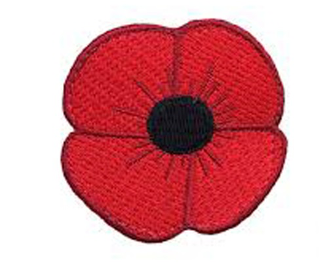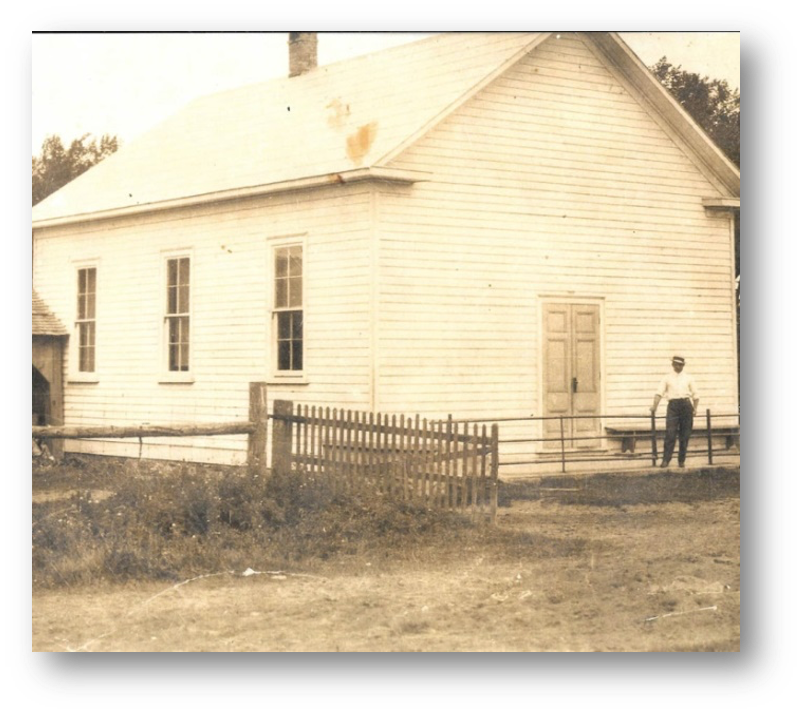Click to Download the PDF
Download the Word Doc
President’s Message
Welcome to the November edition of the Georgina Historical Society. There was a great turn out at our October General Meeting to hear Melissa Matt speak on the Ruth Johnson Thompson’s collection and papers of the Johnson family and Pefferlaw. Lots of discussion followed the presentation. The collection is available for research at the archives.
The website committee has been working hard rejuvenating our website. The new updated, easier accessible website will be available in early 2020.
Don’t forget the AGM and dinner this Thursday, November 14. Still time to reserve your ticket!
Contact me or any board member. Looking forward to seeing you there.
905-722-0180
905-830-2575
btglover@rogers.com
~ Tom Glover
Lest We Forget

At the outbreak of war in Europe in 1914, men signed up in droves to serve their King and country. Some who enlisted had to be turned away and deemed unfit for service. Others, who were too young to enlist, lied about their age and served in combat anyway. Enlisting as a soldier and fighting overseas became common ground for men from all walks of life. Based on military records, one can piece together their stories. Brothers enlisted and fought together; fathers and sons fought from separate camps; mothers, wives, and lady friends waited back home; and soldiers who enlisted separately here in Canada were shipped overseas to fight together within the same battalion.
There was a large group of men from York County who enlisted as part of the 127th York Rangers Overseas Battalion or were transferred to the Construction Battalion of the Canadian Railway Troops who laid tracks for the Vimy Ridge raid. There were a number of brothers from the area who served together and were lucky enough to return home together. Many didn’t. The story takes a sad turn when it comes to fathers and sons; sometimes only one of them made it home.
Britain and subsequently Canada declared war on Germany in August of 1914. One of the first Canadian contingents of about 25,000 soldiers departed from Valcartier Quebec a month later. It was the beginning of a flood of enlistments. The following year one of these men, Herbert Laurence Morton, enlisted with the Canadian Engineers in September of 1915, at age 18. He went overseas a few months later and served in France and Belgium for two and a half years. In 1998, at age 101, he was awarded the Legion of Honour (Chevalier) at a ceremony in Vimy, France. He was the son of Arthur Wellesley Morton and his first wife Mary Abigail LaChapelle. Arthur was from North Gwillimbury Township in York County, Ontario and Mary grew up in a farming family in nearby Georgina Township. Their first child, Arthur Kingsley, was born in Georgina Township in June 1891. Three more sons were born there: Louis Milton (1894), Clarence Wellesley (1895) and Herbert Laurence (November 16th 1896). Laurence and Louis both enlisted in September 1915. Louis joined the 46th (South Saskatchewan) Battalion and went overseas in October while Laurence signed up in Calgary on September 4th with the Canadian Engineers Training Depot.
Laurence went to the UK with the 5th reinforcing draft of the Canadian Engineers Training Depot, sailing on the SS Metagama on January 1st 1916 arriving in England ten days later. In March he contracted German measles and he spent two weeks in Moore Barracks Hospital, Two months after recovering he was assigned to the Mounted Company, Canadian Engineers Training Depot. At the end of September he was sent to France and transferred to the 1st Army Troops Company, Canadian Engineers. He joined his new unit in the field in mid-October, just as their part in the Somme Offensive was ending. Army Troops worked with the engineers to construct and repair defences, buildings, roads, bridges and water supply systems. They set up and operated blacksmith, carpenter, painting and motorized vehicle repair shops. They also built heavy gun emplacements and helped to lay mines, often working close to the front line within range of artillery and machine gun fire.
Major battles for the Canadian Corps in 1917 were Vimy Ridge, Hill 70, and Passchendaele. In December 1917 Laurence had two weeks leave in the UK and he was back with his unit just after Christmas. The Canadians were heavily involved in the final period of the war, starting with the Battle of Amiens in August 1918. Laurence’s brother Louis Morton was killed in action on September 1st, 1918, in the operations near the Drocourt-Quéant Line. The Armistice ended hostilities on November 11th and two weeks later Laurence had leave in the UK again returning to France December 10th to serve there for another three months. He was back in the UK with his unit in early March of 1919 and sailed for Canada on April 16th on the SS Belgic, arriving at Halifax a week later and was discharged on demobilization April 30th in Ottawa.
In 1998 the French government honoured surviving veterans of the Great War who had served on French or Belgian soil by awarding them the Legion of Honour/Légion d’Honneur (Chevalier). Laurence was one of 17 Canadian veterans brought to France and Belgium by Veterans Affairs Canada in November that year. He was 101 years old at the time. The group left Canada on November 4th and the trip included visits to Lille, Le Quesnel, the Somme, Bourlon Wood, Ypres, and the Passchendaele and St. Julien monuments. They were in Mons, Belgium on November 11th, the 80th anniversary of the signing of the Armistice. The veterans received their Legion of Honour medals during a ceremony at Vimy. Laurence said he had been at the Battle of Vimy Ridge, working with the troops responsible for laying mines. He had vivid memories of ‘his best friends in the war, Boss and Charley Chaplin,’ the horses who drew the cart that he drove (Legion Magazine, January 1, 1999, ‘Solemn Moments in Mons’ by Ray Dick).
The majority of soldiers returned home in 1919 and were discharged from military service, months after the official ceasefire. My paternal grandparents emigrated from Britain that year and the vessel that brought them to Quebec City was over half full of troops returning home to their loved ones. In some ways, it’s easier to commemorate the fallen. There was grieving,” Cerenzia said. “Those who came back suffered just as much as the fallen.” And many never did make it home.
Here is a partial list of those who served overseas in World War I from our area:
Note: the rank Spr. was a Sapper in construction and engineering units equivalent to Private in most other units of the army.
Cpl. Harvey Clinton McCordick
Born: May 5, 1885, Roches Point, Georgina
Enlisted: April 4, 1916, Newmarket
Married
Occupation: Shipper
Arrived: May 5, 1917, England; Feb. 28, 1918, France
220th York Rangers Overseas Battalion
Discharged: March 29, 1919
Pte. Hiram Henry Batt
Born: Oct. 27, 1899, Belhaven, Georgina. Lived in Richmond Hill.
Enlisted: Jan. 11, 1918, Winnipeg
Occupation: Steam Shovel Fireman
Arrived: March 4, 1918, England
No. 10 Forestry and Railway Construction
Died: Nov. 20, 1918 of influenza
Pte. Wesley Sidney Smith
Born: June 11, 1893, Baldwin. Lived in Uxbridge.
Enlisted: Dec 2, 1915, Uxbridge
Occupation: Farmer
116th Overseas Battalion
Discharged: July 5, 1916, medically unfit due to swollen knee from being thrown from a horse.
Pte. Albert Osborne Batt
Born: Aug. 28, 1897, North Gwillimbury, Georgina. Lived in Markham.
Enlisted: May 15, 1918, Toronto
Occupation: Farmer
1st Depot Battalion
Discharged: May 15, 1918, erroneously ordered to report.
Spr. Walter Rushton Albinson
Born: April 7, 1890, England. Lived in Sutton.
Enlisted: Jan. 31, 1916, Sutton
Occupation: Farmer
Arrived: Aug. 30. 1916, England; Jan. 13, 1917, France
2nd Battalion Canadian Railway Troops
Discharged: March 22, 1919
Pte. Archie Emerson Boag
Born: July 31, 1883, Sutton
Enlisted: April 19, 1916, Toronto
Married
Occupation: Driver
Arrived: May 14, 1917, England
208th Battalion
Discharged: March 27, 1919
Spr. George Wesley McArthur
Born: May 26, 1888, Sutton
Enlisted: Sept. 24, Valcartier, Quebec
Married
Occupation: Postal Clerk
Arrived: July 20, 1915, France
Lord Strathcona’s Horse to 3rd Division Signal Company
Discharged: June 12, 1919
Pte. Leonard Francis Greenwood
Born: Feb. 12, 1890, Sutton
Enlisted: April 24, 1916, Toronto
Occupation: Bank Manager
Arrived: May 14, 1917, England; Feb. 17, 1918, France
208th Battalion
Gunshot wound: Aug. 8, 1918, right shoulder, right arm amputated.
Discharged: May 13, 1919, medically unfit Died: July 31, 1919
Since World War I Canadians have fought in many places; in Europe and the Pacific in World War II, in Korea and Afghanistan, and as UN peacekeepers in a multitude of locations in many parts of the world. Let us remember them, all.
In Flanders Fields – By John McCrae
Between the crosses, row on row,
That mark our place; and in the sky
The larks, still bravely singing, fly
Scarce heard amid the guns below.
We are the Dead. Short days ago
We lived, felt dawn, saw sunset glow,
Loved and were loved, and now we lie,
In Flanders fields.
Take up our quarrel with the foe:
To you from failing hands we throw
The torch; be yours to hold it high.
If ye break faith with us who die
We shall not sleep, though poppies grow
In Flanders fields
Where in Georgina?

Enid Abram once again correctly identified last month’s mystery location as the mill and river in Pefferlaw. See if you can correctly identify this month’s location and what it is.
News and Events
Debbie Johnson, co-author with Dale Taylor of the Belhaven book, will be our guest speaker at our Annual General meeting and dinner. Be sure to check out the particulars of the meeting sent to you by e-mail and on the last two pages of this newsletter. This is a reminder a reminder that membership fees for 2020 are due by the end of December. It was decided earlier this year that membership fees and the cost of the dinner were no longer sustainable with a single price as in the past; dinner was costing over what was being collected for both the dinner and membership combined.
The website committee has been very active with the rebuilding of the GHS website. A Beta version will be tested out in December and the finished product should be ready for the New Year. We could use more membership participation and input on this committee. Any photos of events and activities that could be shared in our gallery of pictures would be appreciated. Let us know what news and events you would like to see included. Some things we will be including on the rebuilt website will be Board minutes, a list of our subcommittees and what they do (the membership is welcome to participate on these committees), a page where you can find links for historical and genealogical research, as well as the usual information on membership, volunteering and donations. We will be adding application forms for membership and volunteering.
What will be new is sponsorships. We will be developing at least two or three types of sponsorships as a way of raising money for the GHS. We have few sources of income to help us do the work we do and sponsorships can help us. Names and/or logos of business cards can be displayed on our website and at our events for a fee. This is done by many other historical societies to help them defray their costs.
Upcoming Dates
November 14th: Annual General Meeting, Egypt Hall, 5 PM meet and greet, 6 PM dinner
November 23rd: Old Fashioned Christmas, Georgina Pioneer Village 5–8 PM
December 6th: Board meeting 2 PM, Noble House
January 6th: Board meeting 2 PM, Noble House
January 20th: Bring & Bragg venue and time to be announced
